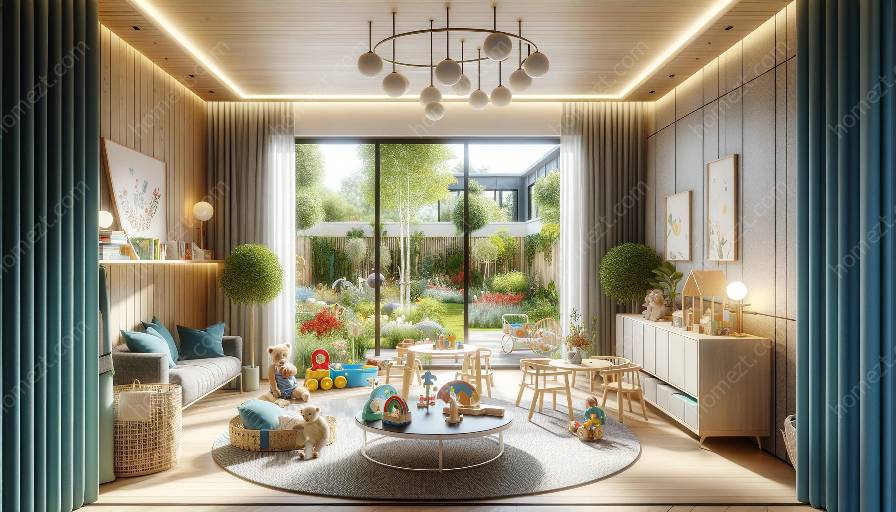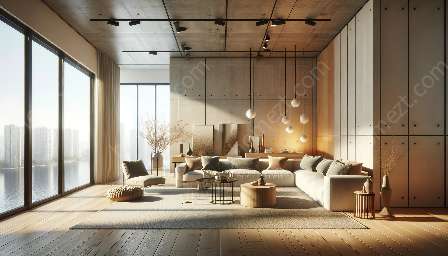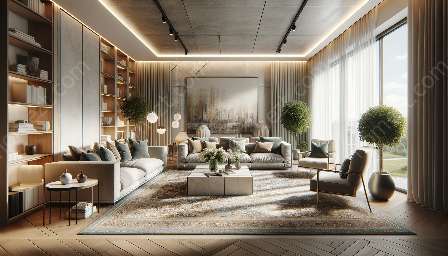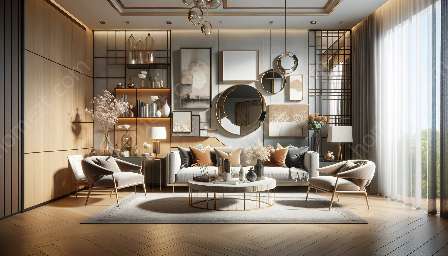Design and layout play a crucial role in creating a functional and aesthetic nursery and playroom. When it comes to furniture arrangement in these spaces, there are several factors to consider, such as safety, accessibility, and child-friendly design. This comprehensive guide will explore the art of furniture arrangement in the context of nursery and playroom design, providing tips and insights for creating an attractive and real layout that fosters creativity, learning, and play.
Understanding the Importance of Furniture Arrangement
Furniture arrangement is a fundamental aspect of interior design, particularly in spaces dedicated to children. In nursery and playroom settings, the layout of furniture directly impacts the functionality and visual appeal of the space. A well-thought-out arrangement can enhance safety, promote exploration, and contribute to a harmonious ambiance.
Key Considerations for Furniture Arrangement
Before diving into the specifics of furniture arrangement, it's important to consider the unique requirements of nursery and playroom design. Here are some key considerations:
- Safety: Safety should always be a top priority when arranging furniture in a nursery or playroom. Avoid sharp edges, secure heavy furniture to the wall, and ensure that items are placed out of reach of young children.
- Accessibility: Children should be able to access toys, books, and other items easily. Arrange furniture in a way that allows for smooth movement and facilitates independent play and exploration.
- Durability: Given the active nature of children's play, opt for durable and easy-to-clean furniture materials. Stain-resistant fabrics and sturdy materials can withstand frequent use and spills.
- Creative Expression: The furniture arrangement should encourage creativity and imaginative play. Consider incorporating designated areas for art, reading, and imaginative play within the layout.
Tips for Arranging Furniture in a Nursery
When designing a nursery, furniture arrangement plays a crucial role in creating a nurturing and soothing environment for both the child and the caregiver. Here are some tips for arranging furniture in a nursery:
- Focal Point: Designate a focal point, such as the crib or a colorful wall, and arrange furniture around it to create a cohesive and visually appealing layout.
- Zoning: Divide the space into distinct zones, such as the sleeping area, feeding area, and diaper-changing station. Arrange furniture accordingly to establish functional zones within the nursery.
- Flow: Ensure a smooth flow of movement by arranging furniture in a way that allows easy access to essential items and provides a clear path to the crib and other main areas of the nursery.
- Comfortable Seating: Incorporate comfortable seating for the caregiver, such as a glider or rocking chair, in close proximity to the crib for easy access during nighttime feedings and comforting the baby.
Creating an Engaging Playroom Layout
A playroom should be a space that promotes active play, creativity, and learning. When arranging furniture in a playroom, consider the following tips to design an engaging and functional layout:
- Zoning for Activities: Create separate zones for different activities, such as arts and crafts, reading, active play, and quiet time. Use furniture to delineate these zones and provide appropriate storage for related materials.
- Child-Scaled Furniture: Incorporate child-sized furniture, such as tables and chairs, to encourage independent play and creativity. Arrange these pieces in a way that allows for easy access and promotes interaction among children.
- Storage Solutions: Utilize shelves, cubbies, and bins to organize toys, books, and art supplies. Arrange these storage solutions at a child-friendly height and label them to encourage tidiness and independent clean-up.
- Interactive Elements: Consider incorporating interactive elements, such as a chalkboard wall or a sensory play area, into the furniture arrangement to stimulate children's senses and encourage exploration.
Conclusion
Effective furniture arrangement is essential for creating inviting and functional nursery and playroom designs. By considering safety, accessibility, durability, and opportunities for creative expression, it's possible to arrange furniture in a way that supports children's development and enhances the overall aesthetic of the spaces. Whether it's designing a calming nursery or an engaging playroom, strategic furniture arrangement can contribute to a stimulating environment where children can learn, play, and grow.






